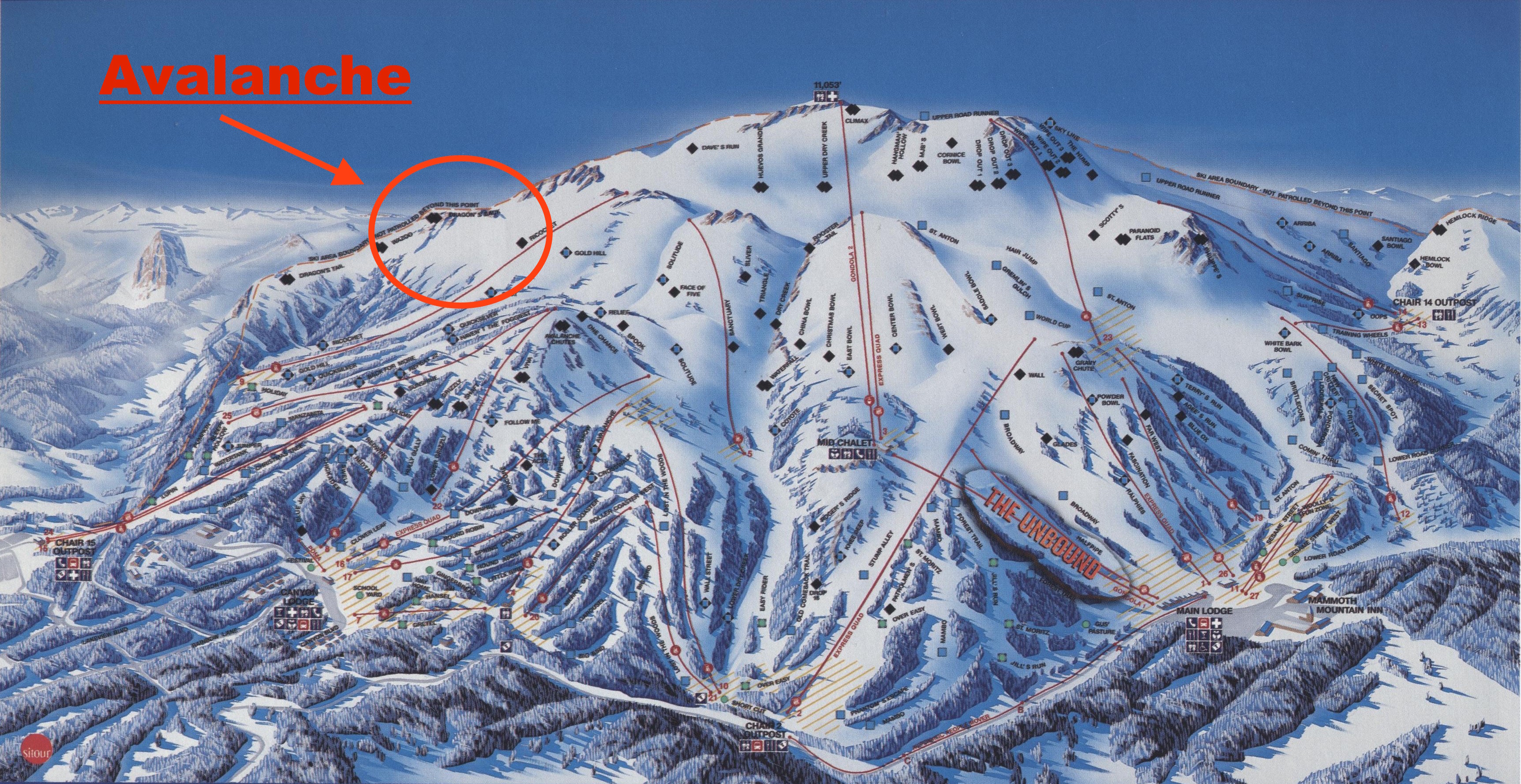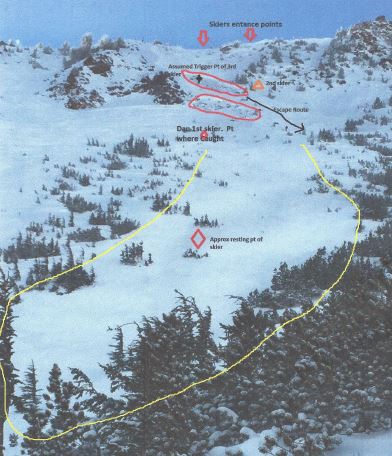
An in bounds avalanche was triggered by a skier in the Dragon’s Back area of Mammoth Mountain ski resort in California on Dec. 14th, 2015. Another skier below was caught in the avalanche and rode in it for a few hundred feet. This area was closed at the time of the avalanche.
The avalanche was 1-foot deep, 50-feet wide, ran for 800-feet, and was triggered on a 45º NNE facing slope. This avalanche triggered a second avalanche with a 2-foot deep crown.
The skier who triggered the avalanche was not the first skier to ski the slope.
The skier caught in the avalanche was shaken up, but “relatively unhurt.”

EASTERN SIERRA AVALANCHE CENTER REPORT:
Mammoth Mountain – Skier triggered avalanche – Dragons Back
Mammoth Mountain Ski Patrol reported that a skier triggered avalanche occurred in a closed area that had not seen skier traffic yet this year. The upper crown was approximately 30cm deep, 50’ wide and ran approximately 800’. It triggered a second avalanche lower down on the slope with a crown of approximately 60cm. The slope had been skied by several skiers prior to avalanching. The skier who triggered the slide did not get caught, but the slide did catch a skier lower down on the slope and carried him a few hundred feet and left him on the surface of the debris, shaken, lost one ski, but luckily relatively unhurt. The avalanche occurred in what is known as Dragon’s Back Chute 3, on a NNE facing 45 degree slope.
What makes this avalanche interesting and pertinent to back country slope conditions are as follows: First, this slope had not yet been skied this year, had no skier compaction and therefore was very representative of a “back country” slope. Second, an artillery round was shot into this chute on Saturday morning, 12/12, which produced a small avalanche failing within the new storm layer. 2 days later on 12/14 the slope was hand-charged with dynamite resulting in minor sluffing. The slope was not ski cut or skied by patrol due to the thin snowpack and hazardous exposed obstacles, and a closure was put in place to keep the public from skiing this area. Later that day, skiers from the public broke this closure, and ended up triggering this larger avalanche which failed in a deeper older weak layer of the snowpack (faceted layer underneath a melt freeze crust which was the snow surface prior to last week’s storms).
This example illustrates how important it is to consider the variability that can exist in the snowpack across slopes. Sensitive points that may result in triggering an avalanche can be very isolated. The “starting zone” for this avalanche was further down the slope than might be expected. North winds prior to last week’s storms had stripped the upper reaches of this slope (the typical starting zone for avalanches) to bare ground, effectively removing the older weak layers of the snow pack from this area. This weak layer continued to exist lower down the slope, where the avalanche was triggered. The hand charge explosives presumably weren’t able to be thrown far enough down or hit the sensitive “sweet spot” to trigger a significant avalanche. Also of great interest is that an artillery round 2 days before did not trigger a slope failure in this old weak snow layer, even though the second crown went right thru the middle of the crater that the artillery round left! This could possibly be for one of two reasons: One, that the round hit the middle of the chute where the snow pack was deeper and less sensitive to triggering. Two, that the cold temperatures over the last two days since the round was fired resulted in further faceting and weakening of that deeper layer in the snow pack to the point where it was now more sensitive to failure given the right force.
makes me think of several times the charge or round causes a stress point to weaken, but does not release at that time.
“But I’m such a great skier, closures don’t apply to me! I ski where I want!”
And you might pay the cost with your life.
You circled Dragon’s Tail, not Dragon’s Back on the trail map.
Thank you, Jason. Just fixed that.